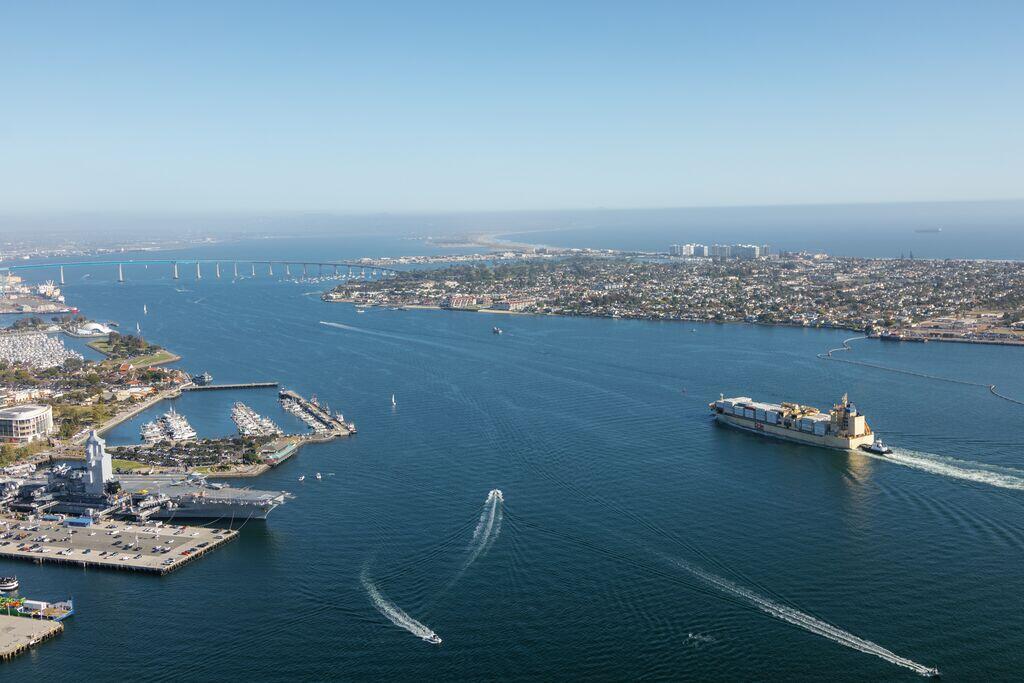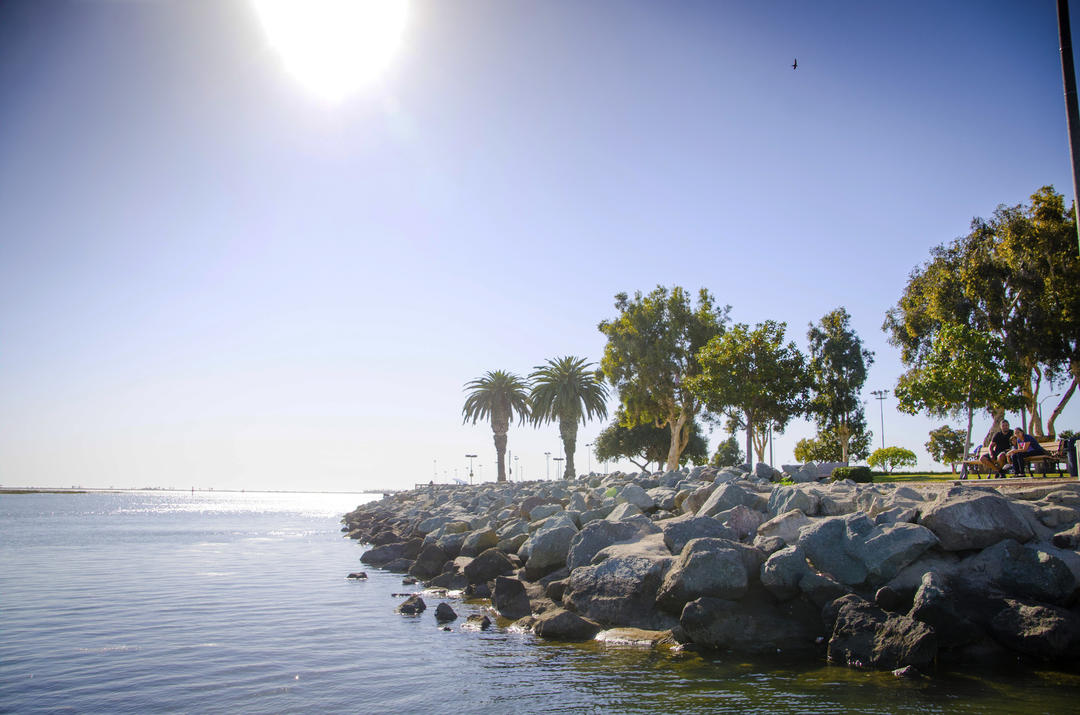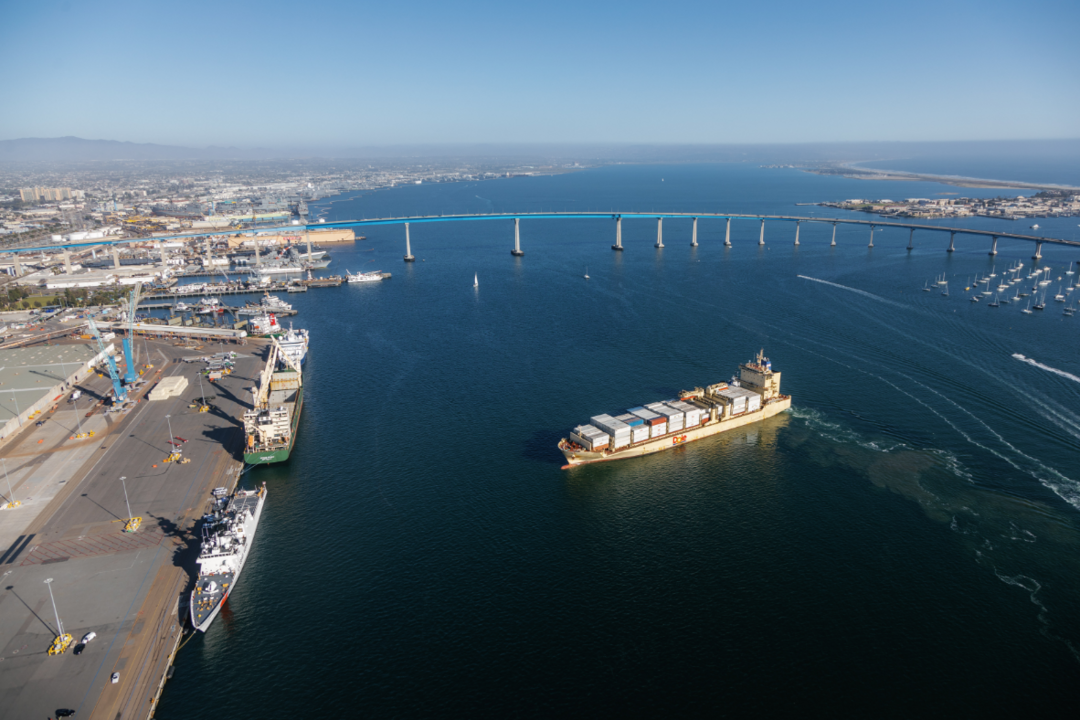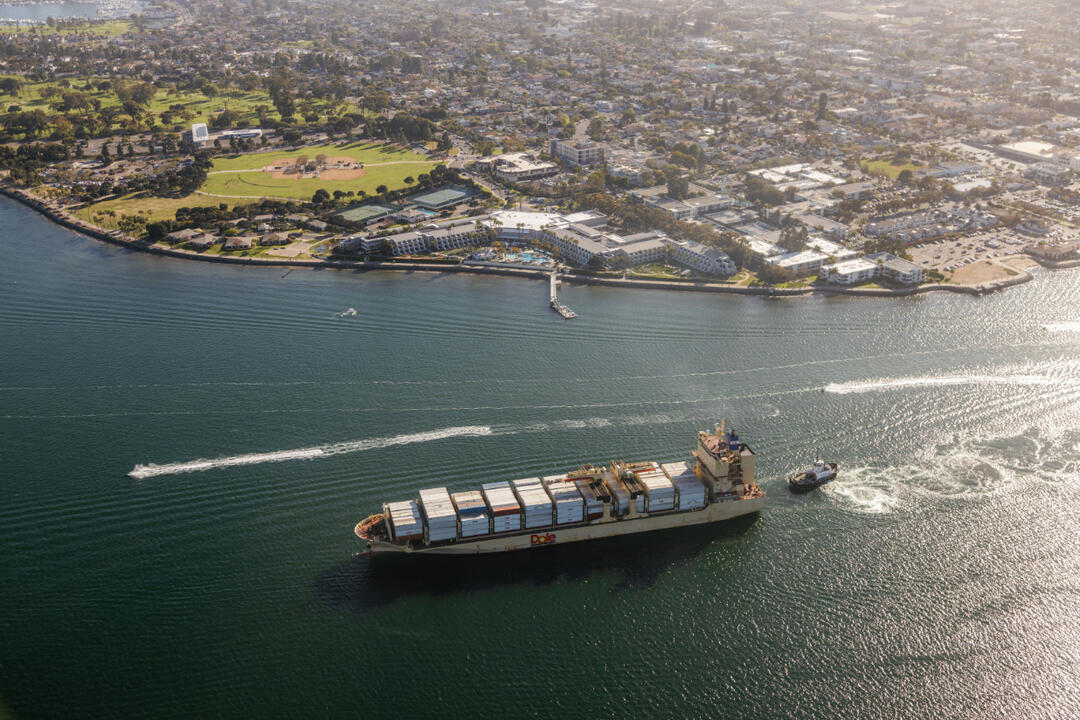Two Reasons Vessels Are Volunteering to Slow Down as They Visit San Diego Bay
As vessels enter and exit San Diego Bay, you may notice that the waves are soft and gentle. You may also notice the air quality feels fresh and clean.
Though gentle waters and clean air may feel like natural achievements, within a bay as bustling as ours, they are the result of large efforts, projects, and programs along our bay of life. To dive a little deeper into this story, learn about one of the projects contributing to our bay of life, and celebrate participating vessel operators, read on!
A Short Rundown: The Voluntary Vessel Speed Reduction Program
The Voluntary Vessel Speed Reduction Program is an objective of the Maritime Clean Air Strategy to lower the emissions of air pollutants and greenhouse gasses from cargo and cruise ships, by reducing speeds in the vicinity of San Diego Bay.
Speed Reductions for Participating Vessels
- Participating cargo vessels reduce their speed to no more than 12 knots
- Participating cruise vessels reduce their speeds to no more than 15 knots
Reducing vessel speeds can decrease air emissions, which helps to protect marine life, improve air quality, and enhance our bay of life.


Vessel Speed Reduction Partnerships
Our Voluntary Vessel Speed Reduction Program has been around since 2009. In the calendar year 2024, overall participation within 20 nautical miles was 94% thanks to some great work from our partners.
Partner Recognition
The following Vessel Carriers have achieved at least 90% within 20 nm or 40 nm: Zucarmex, Waterman, Viking Cruises, VWT, Thorco Shipping, Swire Bulk, Splietoff, Silversea Cruises, SIEM, Pasha Hawaiian Lines, Princess Cruise Lines, Pacific Basin, NYK Line, Norden, MLS, MOL, MOS, Lynux, Liberty, K-Line, InterMarine, Holland American Lines, G2, Eukor, Dole, Disney Cruise Lines, Department of Army, CIDO Shipping, Cargill, and CANMARINE.
Reason to Reduce Vessel Speed: Air Quality
The air we breathe is a top priority for those who live, work, and play on and around our bay of life. An expected benefit of vessel operators slowing down is a reduction in engine exhaust emissions. Emission reductions include…
- Greenhouse gas emissions
- Air pollutants (nitrogen oxides (NOx), carbon monoxide (CO), particulate matter (PM), volatile organic compounds (VOCs))
- Diesel particulate matter (DPM)


Reason to Reduce Vessel Speed: Marine Life
The sounds of our bay of life can be beautiful – whales singing to one another, the waves gently lapping the side of a boat, rain tapping along the surface of waters. However, when vessels enter or exit San Diego Bay at a rapid speed, one of the challenges to our marine life is a negative impact to our marine life due to an increase in sounds and vibrations.
Affected Marine Life
- Common Bottlenose Dolphin
- Pacific Harbor Seal
- California Sea Lions
- Eastern Pacific Green Sea Turtle
An expected benefit of vessels slowing down as they enter or exit San Diego Bay is the reduction in vibration, noise, and the potential for collisions with whales and other marine life.
The Voluntary Vessel Speed Reduction Program and the Port of San Diego
At the Port of San Diego, we consider ourselves environmental champions. As environmental champions, we have set ambitious goals and objectives focused on improving air quality, reducing greenhouse gas emissions, and protecting and improving the health of our ocean and its ecosystems.
The Vessel Speed Reduction Program is a part of how we can achieve these goals. For a brief overview about our green way of life and our additional environmental work, visit our Maritime Month page. To continue your deep dive into our goals and protecting and improving the health of our ocean and its ecosystems, visit our Maritime Clean Air Strategy page.

